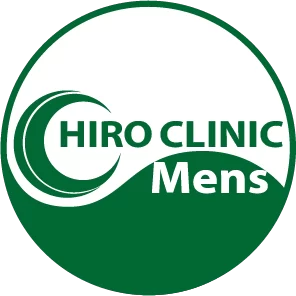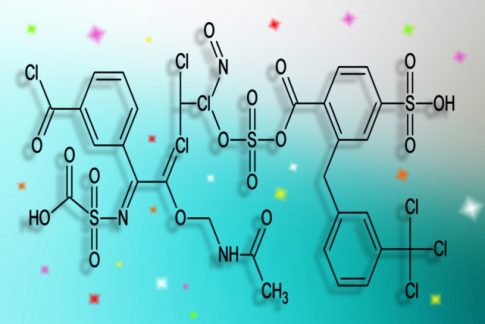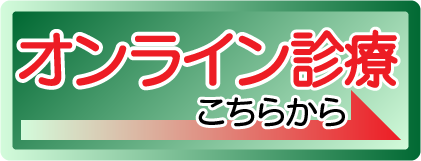Regenerative medicine offers new possibilities in the treatment of AGA (androgenetic alopecia). Regenerative medicine aims to regenerate damaged or deteriorated tissue and utilizes various advanced technologies. Below, we will introduce the regenerative medicine that we perform at Hiro Clinic.
1. Hair stem cell treatment (first in Japan)
There’s no denying that when your hair is healthy and shiny, you feel more confident. However, as we age, hormone levels change and hair follicle size decreases, which leads to hair loss. Genetics, medical issues, and stress can also cause excessive hair loss.
At Kaya, we deeply understand the damage hair loss causes to the mind and body, and offer advanced GCell self-tissue suspension treatments to reduce hair loss and promote hair growth. This is one of the safest and most effective hair growth treatments based on capillary and tissue regeneration therapy.
What is GCell hair growth treatment?
GCell autologous tissue suspension treatment is a single treatment method that has recently been used as an alternative to many hair treatment methods. This new technology is based on capillary and tissue regeneration therapy and helps prevent hair loss and other hair problems. The treatment is chemical-free and involves enrichment of epithelial and mesenchymal cells, creating a microenvironment for tissue regeneration.
How does GCell work?
GCell autologous tissue suspension treatment is a recently developed, effective and reliable method to combat male pattern baldness and other hair loss problems. This process uses a tissue suspension obtained from the patient’s own autologous cells to regenerate hair tissue and skin. During treatment, a dermatologist collects cells from the patient’s own body (scalp), processes and injects them to increase the number of progenitor cells in the treated area.
Advantages of GCell autologous tissue suspension treatment
- Protects existing hair and prevents shedding
- Thickens and strengthens long but weak hair
- help to have thick hair
- Activates dormant hair cells under the scalp
- Increase hair transplant success rate
- 100% homemade therapy (no chemicals used)
- Tissues remain viable and sterile because they are not exposed to the external environment
Common application sites for GCell method
GCell autologous tissue suspension treatment is mainly used on the scalp, hair follicles, eyebrows, beard and mustache.
How long does it take?
The whole process takes about 40 minutes. Tissue samples taken from hair tissue are placed in the GCell kit and processed for 5 minutes. It is then injected into the application site and is completed within 30 minutes. Patients can return to their daily activities immediately after the procedure.
What to expect during GCell hair growth treatment?
GCell Autologous Tissue Suspension Treatment is an injectable treatment that removes three hair follicles from between the ears at the back of the head. Doctors use these tissues because they can create a soft hairline and maintain vitality. The removed hair follicles are then tissue isolated using a special protocol using the GCell Tissue Isolation Kit. The isolated cells are activated through photoactivation under sterile conditions and without exposure to the external environment. Cells are then injected into the target area using mesotherapy techniques. This process requires reliable local anesthesia to keep the patient relaxed and comfortable. After the cells are injected, the target area is sterilely bandaged.
price
One time 198,000 yen (excluding tax)
This includes everything from collection to injection of stem cells.
This is one type of regenerative medicine.
Hiro Clinic provides this treatment after receiving approval for regenerative medicine.
Until now, there have been methods to restore fat stem cells, but this is the first treatment in Japan to restore stem cells derived from hair follicles.
FAQ
- Is the treatment painful?:
- Local anesthesia will be injected at the area where the hair will be harvested, so there will be no pain at that time.
- Treatment Area Some patients may experience slight pain or discomfort, which is often relieved with numbing cream.
- When can I feel the effects?: Effects vary from person to person, but you can usually feel it within a few weeks to a few months.
- How often should I receive treatment?: Basically, it is done once, but if the effect is insufficient, it can be repeated multiple times.
2. PRP (platelet rich plasma) therapy
How aging affects skin texture, color, and tone
As we age, our skin loses collagen, which provides a necessary cushioning layer between the skin and the underlying structures. This loss of collagen causes the skin to become thinner, lose elasticity, and sag. Also, the decrease in hyaluronic acid causes the skin to become dry. Hyaluronic acid is an ingredient that helps your skin retain moisture.
However, once the body is mobilized to regenerate cells, the effects are dramatic and long-lasting. This is the essence of platelet-rich plasma (PRP) therapy.
What is PRP?
Plate Rich Plasma (PRP) Therapy is a rejuvenating treatment that harnesses the natural healing and regenerative powers of your own blood. Platelets in the blood are rich in growth factors, which are injected into targeted areas of the skin and scalp to promote and accelerate cell regeneration. PRP therapy can be used for tissue regeneration in any part of the body.
This ability makes PRP effective in treating:
- Eliminates wrinkles, sagging, and hollowness on the face, neck, and hands. Treatment improves skin texture, color, and tone.
- Treatment on the scalp promotes healthy hair growth.
- Helps regenerate skin with acne scars and promotes the regeneration of new, flawless skin.
How PRP treatment works
To reverse the visible signs of aging, you need to replenish collagen (support) and hyaluronic acid (volume). This requires cellular rejuvenation, and dermatologists rely on PRP therapy.
Platelets contain growth factors that promote cell healing and regeneration. PRP is plasma with approximately five times the concentration of platelets found in normal blood. It is made by drawing a small amount of blood, centrifuging it to concentrate the platelets in the plasma, and separating this platelet-rich plasma from red and white blood cells. Inject this concentrate into the target area.
The regenerative ability of platelets works to replenish collagen and hyaluronic acid, reactivate tissue regeneration, and develop new blood vessels, improving skin texture, tone, and elasticity.
When PRP therapy is used for hair regrowth, platelets are injected into the area where the hair follicle is damaged. This improves the blood supply in the area, providing nutrients to the hair follicles and promoting hair growth.
What you can expect from PRP treatment
Platelet Rich Plasma (PRP) is a way to access the fountain of youth, so to speak, and the best part is that it is done completely in your own power!
PRP therapy uses your own blood for regeneration, so there is little risk of infection or allergies. Swelling usually subsides within 2 to 3 hours.
Platelet Rich Plasma (PRP) deeply rejuvenates the skin, thickening it and erasing wrinkles around the eyes and forehead. It also reduces wrinkles around the mouth and neck, maintaining a youthful appearance. Additionally, it improves skin texture and leaves your skin bright and glowing.
It also works wonders on your hair, leaving it looking thicker and more conditioned. At least 3 sessions every 3-4 weeks are required for optimal results. Afterwards, it’s a good idea to do a maintenance session to establish long-term effects.
Care after PRP treatment
Aftercare after PRP treatment for the skin:
- Swelling may occur, but it usually subsides within 2 to 3 hours. Recovery begins quickly, so you can return to your daily activities immediately after your service. However, there may be some redness or slight bruising in the treated area, which will disappear within a few hours.
- If there is swelling, apply a cold compress or ice pack to the treatment area. A few hours after treatment, you can gently wash the treated area, but be careful not to scrub too hard. Make-up can be applied immediately after treatment with gentle, clean hands or an applicator. For long-lasting results, avoid sunlight and use sunscreen.
Aftercare after PRP treatment for hair:
- Your scalp may remain sore and tender for 2-3 days after receiving a series of injections. You may also experience swelling of your scalp and forehead on the second or third day, but this is very normal and will subside within a week.
- Use cold compresses to reduce pain and swelling. Avoid rubbing your scalp for at least 4 hours after treatment. Remember when your doctor gently massaged your scalp for a few minutes? This is to ensure that the injected PRP is evenly distributed throughout the scalp. Perform this massage on yourself 2-3 times a day for a week after treatment. Avoid high temperatures (hair dryers, sunlight, saunas, steam rooms, very hot showers, hot yoga, strenuous exercise, etc.) until the next morning after treatment. Do not shampoo your scalp for 12-18 hours after treatment. This is to ensure that the medicine is completely absorbed into the scalp. You can use shampoo and conditioner as usual the next day, but avoid scrubbing your scalp too hard while shampooing. Be sure to apply a topical antibiotic ointment or other soothing and healing cream recommended by your doctor.
FAQ
How long does the effect of PRP treatment last?
The effects of PRP treatment may not be permanent, but they last for a long time. You can expect the effects to last 12 to 24 months.
What are the side effects?
The most common side effects of PRP treatment include skin discoloration, allergic reactions, swelling, and redness, which disappear within a few hours.
Does PRP hurt?
Although it’s not really painful, you may experience some discomfort depending on the area of your body being treated with PRP.
How much does PRP treatment cost? Is it expensive?
The cost of PRP treatment depends on the area treated and the number of sessions required.
Who should not receive PRP?
People with infectious diseases and patients with metastatic disease.










